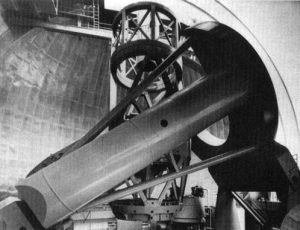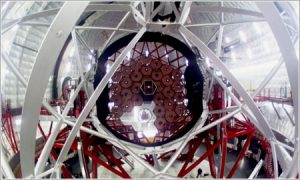In my last post I began a series discussing what I see as the decline of Science in the United States. Part one of this series consisted of a little history lesson on the importance of Science in both the founding and the growth of the USA and ended in the middle 20th century when American Science was dominant.
Today I’m going to discuss the impact of America on astronomy and our knowledge of the Universe by the construction of a series of ever larger and more powerful optical telescopes. Then I will show how, after more than a century in the lead in astronomy, the United States has lost that lead and presently has no plans to even remain in the pack.
As I mentioned last time colonial America already had a famous astronomer in David Rittenhouse whose observations of the transit of Venus in 1769 helped to make the first accurate measurement of the distance to that planet. However the man who took American astronomy to levels of achievement that most scientists had considered to be impossible was George E. Hale.
Hale was a solar astronomer whose own discoveries included the first detection of the presence of carbon in the Sun. Today however Hale is best remembered for organizing and directing the construction of a series of progressively larger telescopes. The 40-inch (1meter) Yerkes, the 60-inch (1.5meter) Carnegie, 100-inch (2.54meter) Hooker and 200-inch (5.1 meter) Hale telescopes were each in turn the world’s largest scientific instrument, until Hale built the next one. (For those who aren’t familiar with telescopes the size given, 100 inch for example, refers to the diameter of the lens or mirror that gathers the light. The larger the optics the more powerful the telescope.)
The 100-inch telescope is probably the most famous. That is because it is the instrument that Carl Hubble employed to show that Andromeda and other ‘nebula’ were in fact Galaxies like the Milky Way and that the entire Universe was expanding. It was these observations that led to the big bang theory. The picture below shows the 100-inch telescope in its dome at Mount Wilson observatory.

From 1948 into the late 1970s the 200-inch telescope remained the World’s largest. Since then there has been flurry of new telescope construction with even larger sizes made possible by a ‘segmented mirror’ design approach. The picture below shows the segmented mirror design as used in Gran Telescopio on the Canary Islands.

At the present time the US is in second place with our 10meter (396-inch) Keck telescope in Hawaii being only slightly behind Europe’s 10.4meter (412-inch) Gran Telescopio. The problem as I see it however, is not so much that the rest of the World has caught up with us but that the US is no longer even trying to keep up.
While Europe has several new telescope projects under construction, including the 39.3meter (That’s 1556-inches!!!) European Extremely Large Telescope, the US has yet to begun construction on its 30meter (1188-inches) Telescope due to delays in permits and funding. It seems as if funding and just a general enthusiasm for developing the new equipment necessary to continue exploring the Universe has declined in the US. A decline that started in the middle to late 1990s, the time when the Keck telescopes were completed.
Telescopes allow us to study the largest and furthest objects in the Universe, including the Universe itself. Next time we’ll discuss the scientific instruments that allow us to study the smallest objects that exist, these are the particle accelerators, the atom-smashers that enable us to investigate the very nature of space itself.
